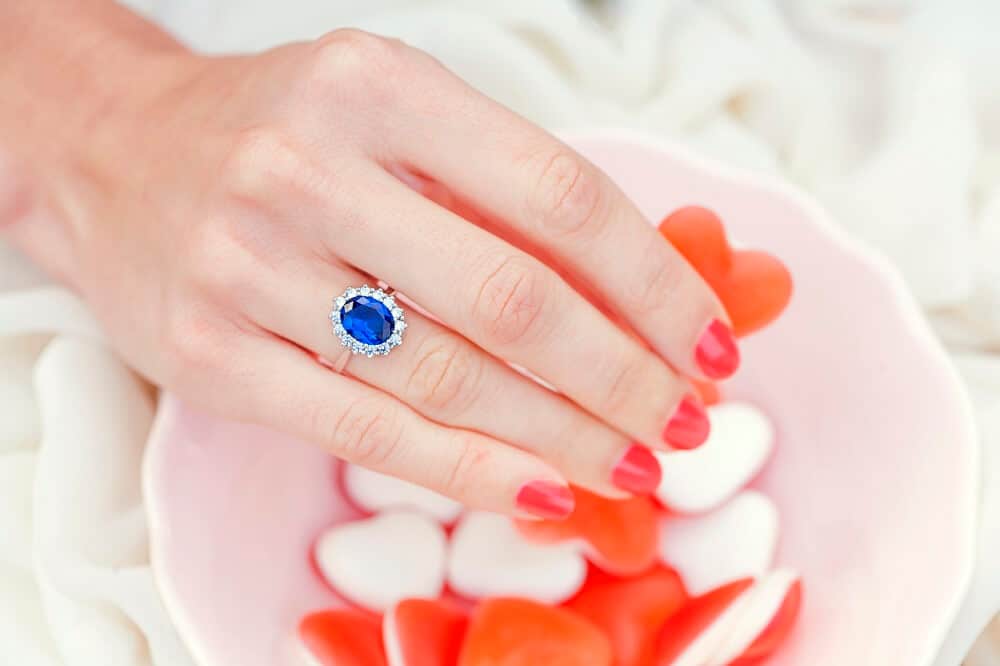Diamonds
The clear sparkle of a diamond in the sunlight bedazzles with its brilliance. For a long while, these have been the reigning champions in the diamond world – clear, with no imperfections, white, colorless. It’s easy to lose sight of the rarer, more precious, and more unique players – colored diamonds. Let’s see how they’re made.
What are diamonds made of?
All diamonds, including colored ones, are made up of the same material – carbon. Under intense pressure and heat, carbon atoms bond in a crystal structure. In case any foreign materials (such as boron, for example) find their way into this crystallization process, we get a splash of color in our diamond.
How are diamonds made?
The short answer to this question is that 3 billion years ago, deep within the Earth, the pressure and intense heat changed the very structure of the carbon molecule, until it finally transformed into the gem we know and love.
Still, the newly formed diamonds are too deep in the Earth for us to ever reach them. The way they’re pushed, or expelled, up is by a deep-source volcanic eruption. Magma travels through the Earth’s crust, ‘picks up’ diamonds on the way, and brings it closer to the Earth’s surface. As it cools, this diamond-bearing magma hardens to form Kimberlite and settles into vertical structures called kimberlite pipes. These pipes are our most significant source of diamonds – however, only 1 in every 200 of them actually contain gem-quality stones.
Just like the ‘regular’ diamonds, natural colored diamonds go through the same process, with one crucial difference. During the crystallization process, foreign particles get trapped inside and cause an alteration in the chemical process. The final color of the diamond depends on the trace minerals present during the formation process.
What colors do diamonds come in?
Even though all of us know the enchanting brilliance of clear diamonds, these dazzlers can come in many colors. Red, pink, blue, green, violet, purple, orange, and yellow – diamonds encompass every color of the rainbow.
Red or pink diamonds are created in intense pressure and heat (more so that the regular, clear diamonds) which distorts the crystal lattice of the molecule so that it absorbs green light. This is how the soft pink and the ultra-rare red diamonds are made.
Grey or blue diamonds have traces of boron within them. This ‘impurity’ makes it a gorgeous, unique gem.
 Green diamonds get their color just before they’re about to leave the uppermost layer of the Earth’s crust. There, they absorb some of the natural radiation – don’t worry! Green diamonds are simply enchanting and will not cause you any harm.
Green diamonds get their color just before they’re about to leave the uppermost layer of the Earth’s crust. There, they absorb some of the natural radiation – don’t worry! Green diamonds are simply enchanting and will not cause you any harm.
Diamonds of a purple hue are created by, as far as we know, some kind of crystal distortion. No one can quite put a finger on it, but it’s believed hydrogen is somewhat responsible for giving us an indescribable violet stone.
For orange and yellow diamonds, we have nitrogen to thank. During the diamonds’ formation, nitrogen atoms attach so that they absorb blue light, and we get to admire a golden diamond. If the nitrogen atoms group in a very specific way, the ultimate product is a precious gem of an orange hue.
No matter which diamond you prefer – white, pink, blue, or green – you can rest easy knowing they are not just beautiful, but also priceless heirlooms you can keep in the family for years and generations to come. If you want to add to your family’s jewelry collection, drop by one of our Miami jewelry stores – we can help you choose your perfect jewelry piece, one that will shine bright for years to come.














































Leave a reply